#Austronesian (peoples)
Text
The exploits of Christopher Columbus, Vasco da Gama, and other European explorers during the age of discovery—all predicated on a mastery of sail—are well known and exhaustively rehearsed. The true history of sail-powered oceanic exploration extends far earlier than the 16th century and far beyond Europe’s shipyards and outposts. Five thousand years ago, the Austronesians began charting and populating the many scattered islands of the Pacific, braving the ocean in double-hulled canoes laden with chickens, fruit, tubers, and firewood. By 2600 BCE, the ancient Egyptians were dispatching sailing ships to Lebanon to gather cedar. Around 1000 CE, Viking explorer Leif Ericsson reached the shores of North America. In 1405, Chinese admiral Zheng He guided a magnificent armada of 317 ships—60 of them boasting multi-tiered decks, nine masts, and 12 sails each, if historical accounts are to be believed—to Southeast Asia and India in pursuit of exotic spices. In the following centuries, after all this precedent, Europe began to churn the oceans with increasing numbers of carracks, caravels, frigates, and galleons.
— The Long, Knotty, World-Spanning Story of String
#ferris jahr#the long knotty world-spanning story of string#history#maritime history#naval history#travel#commerce#trade#austronesian peoples#egypt#ancient egypt#norsemen#china#leif erikson#zheng he
12 notes
·
View notes
Text
a too-common misconception about the origins of filipinos is that we are all descended from the aeta. we are not. “aeta” refers to a specific ethnic group native to certain places in luzon such as zambales and pampanga, but is also commonly used as an umbrella term for several related ethnic groups across the philippine archipelago. they are identified by physical characteristics such as dark skin and very curly hair (leading to a false belief that they are descendants of black africans) as opposed to those of majority of the country who have lighter skin and hair that is either straight or of looser curl patterns (also falsely believed to be markers of the so-called malay race.)
the aeta are an ethnic minority; as of 2010, there were a documented <100,000 out of millions of filipino citizens identifying as such. it is clear majority of filipinos are not of aeta descent. so where does this myth that all filipinos “descend” from the aeta come from?
generations of miseducation has led the average filipino to believe that, out of the hundreds of ethnic groups native to the philippines, it is the aeta in particular who are the original people who came to the philippines prior to the advent of the austronesian expansion. in other words, filipinos view the aeta as a pure people who are remnants of the old world.
this is not true because:
DNA evidence from the luzon aeta, mamanwa ata, batak, & other similar peoples indicate ancestry from BOTH the earliest settlers of what is now the philippines (commonly referred to colloquially and in the literature as negritos but also sometimes as basal australasians and first sundaland peoples) and later migrants associated with the austronesian expansion.
all other native populations in the philippines save for igorot peoples also show admixture from both negrito/basal australasian/first sundaland peoples and later migrants, most significantly the austronesian speakers. what’s notable is the varying degrees of admixture among aetas and non-aetas.

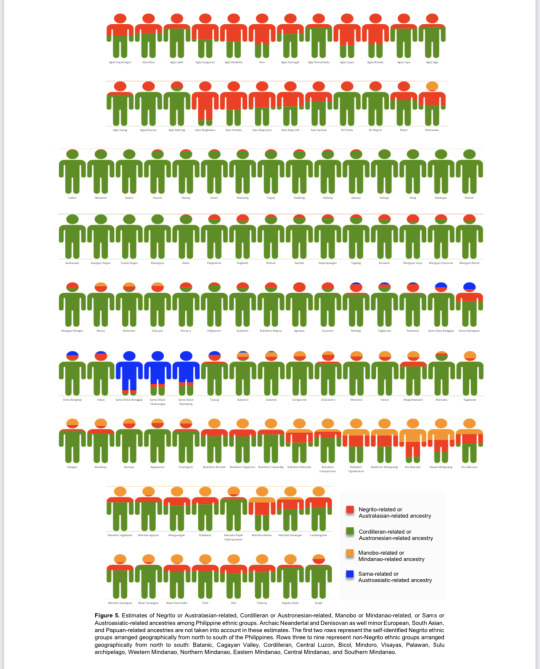
two graphic charts showing the peopling of the philippines and genetic admixture in modern populations. taken from the study, “Multiple migrations to the Philippines during the last 50,000 years” (2021) by Maximillian Larena et al.
i think what has happened is that “aeta” has become synonymous with the earliest inhabitants of the philippines, the real name for these ancient peoples being unknown to us moderns. it is only the flawed tendency to view indigenous peoples as unchanging relics of the past that has led to the biggest mistake filipinos make when discussing our origins: that is, the constant misuse of the term “aeta” to mean “pureblooded original people” when in reality aeta peoples are also descended from later migrants. when people say filipinos are descended from the aeta, they really mean to say filipinos are descended from the first settlers.
aeta peoples are our contemporaries; they are not our living progenitors but their own people with their own languages, ancestral lands, cultures, and histories.
#philippines#indigenous peoples#pseudoscience#southeast asia#genetics#aeta peoples#sundaland#basal australasian#first sundaland peoples#austronesian#x
108 notes
·
View notes
Note
thinking very hard now of just how much austronesian influences are present in the cultural makeup of the fire nation
LET'S GET INTO IT
#fr share more. if you would like!#most of what I'm aware of comes from atlaculture and a few other bloggers#how the cultural influences of atla fit together can be so interesting. although. within that#there's many instances of atla appropriating cutural symbols‚ making racist caricatures. & horrifically using historical events#& places in their little cartoon show w/o regard the ongoing violence against impacted people#what i like about transformative fan spaces is identifying & engaging w/ those issues in a . well. transformative way#tho that doesn't always happen..#back to the point. i can't recall specific austronesian influences (am not knowledgeable) but am v interested :)#10000dandelions#asks
11 notes
·
View notes
Text
people are so weird about filipinos
#stop trying to make us a model minority to bash on south asians#just to turn around and say we can't speak our own language(s) when we're just hanging out in the halls or whatever#it's not just white ppl who are weird about filipinos#other asians are kinda weird about us too?#my chinese ex who had an interesting pattern of only going after filipinos#who also at once insinuated that indigenous taiwanese people were inherently barbaric....#to my face. my brother in christ we're both austronesian.........#my thai friend(?) who keeps badgering filipinos asking them for tipes on how to be more white-washed#and begging us to set her up with people we know because she 'only wants filos'#filipinos are weird about themselves too but i'm tired so i'm leaving it here
6 notes
·
View notes
Text
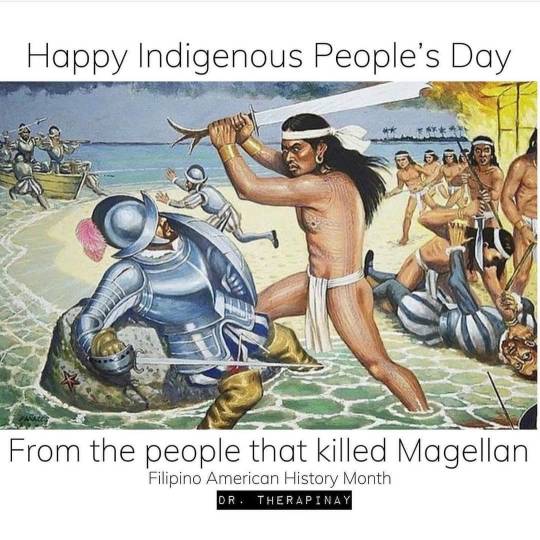
Viva! ✊🏽Mabuhay!🇵🇭 #N8V 🤎🖤
#Mu🌏#N8V#indigenous peoples#indigenous peoples day#naidoc#aboriginal#decolonize#decolonize everything#native filipino#pinoy#indigenous filipino#austronesian#malayo-polynesian#lapu-lapu#ferdinand magellan#battle of mactan#1521#native pride#bayani#mandirigma#kali-eskrima-arnis#colonizer death appreciation
43 notes
·
View notes
Text
I fucking love learning
#did u kno that Madagascar was first inhabited by Austronesian people via the Indian Ocean? and only joined by Bantu travellers later on#idk it’s fascinating. I always assumed the island was just inhabited by people who had come from mainland Africa. the island also apparently#was connected to the Indian subcontinent for longer than it was to the African continental plates so perhaps it was farther east? easier to#get to from over in Indonesia I guess? ancient human history is so fucking cool I want a goddamn Time Machine and a vaccine for everything
1 note
·
View note
Text
Madagascar 🇲🇬
Over 90% of the wildlife on Madagascar is not found ANYWHERE else on the entire planet! They have some absolutely bonkers bugs especially, but their other animal kingdoms deserve a bit of love too. Here’s some particularly weird Madagascan animals, and I’ll forever be slightly bemused that DreamWorks didn’t include any of these unique creatures!








Madagascar is also home to more than HALF the world’s species of chameleon! (Including the biggest one)

Oh, and quick shout out to the Baobab tree. It’s not unique to Madagascar - theyre found in my country too, as well as some other southern African nations - but they’re definitely still strange and beautiful.

#Madagascar#🇲🇬#africa#Malagasy#sub-Saharan africa#Southern Africa#Is it Southern Africa?#as a fellow Southern Africa inhabitant#Madagascar is kind of in a league of its own#it’s just so different to the rest of us in Southern Africa#I love it#must be the austronesian influence#austronesian#also Malagasy people are BEAUTIFUL#I swear every Malagasy I meet was meant to be a model
0 notes
Text
New Archaeological Find Redefines Austronesian People's Origins
Archaeological findings on Pingtan Island suggest Austronesians inhabited areas beyond Taiwan 7,300 years ago, expanding historical understanding.
via South China Morning Post, 23 December 2023: The news articles present the re-location of the Austronesian homeland from Taiwan to China as something new, but it is not. Taiwan is where the earliest evidence (at least until recently) can be found, but even from a decade ago the general thought was that the Austronesian populations in Taiwan likely came from South China.
Chinese archaeologists…

View On WordPress
0 notes
Text
Sometimes, Chris Hayes' podcast goes off on these weird tangents, and the most recent episode is one of them, quite explicitly. It's about the history of Polynesia, which is always a fascinating subject--the Polynesian expansion, and really the whole history of the Austronesian-speaking peoples, seems like one of those feats with rare equal in human history. It's one thing to roam over the vast steppes of Asia--it's quite another to take a canoe, stick some outriggers on it so it doesn't tip over, and start faring the open ocean.
One point his guest makes that I found interesting is that for the most part the atolls and little islands of the Pacific are a very harsh environment. Big volcanic archipelagoes like Hawaii and Aotearoa/New Zealand are rare. Atolls and other reef islands especially are functionally big limestone slabs, often without any source of fresh water, with no large mammals, and with few native plants you can eat. The weather is nice, sure (when there isn't a typhoon--and I can't help but think a typhoon on a little island must be terrifying indeed), but these are not inherently resource-rich places. That the Polynesian (and Micronesian and Melanesian!) peoples not only could travel those distances, but make permanent habitation on the islands they came across, is kind of crazy! You have to be really prepared, with a package of supplies and technologies that set you up for success. Long-distance trade is possible, but you're not gonna be running any kind of substantial import economy across hundreds or thousands of miles of ocean via catamarans.
The comparison that springs to mind to me isn't a historical one like the European age of exploration, which was overwhelmingly to places already peopled and productive, but to science fiction scenarios of space exploration. You'd have to have a little bit of the wild-eyed zealot to be the sort of person who ignores the cries of "there is no possible useful return on this investment" to settle most of these places. But they did! And they thrived for centuries!
2K notes
·
View notes
Text
Shoutout to all Oceanic LGBTQ+ folks.
Shoutout to all Austronesian LGBTQ+ folks.
Shoutout to all Polynesian LGBTQ+ folks.
Shoutout to all Micronesian LGBTQ+ folks.
Shoutout to all Melanesian LGBTQ+ folks.
Shoutout to all Kwaio LGBTQ+ people.
Shoutout to all Papuan LGBTQ+ folks.
Shoutout to all Australian LGBTQ+ folks.
Shoutout to all Kanak LGBTQ+ folks.
Shoutout to all Norfolk Islander LGBTQ+ folks.
Shoutout to all Māori LGBTQ+ folks.
Shoutout to all New Zealander LGBTQ+ folks.
Shoutout to all Aboriginal Australian LGBTQ+ folks.
Shoutout to all Caledonian LGBTQ+ folks.
Shoutout to all Pitcairn Islander LGBTQ+ folks.
Shoutout to all South Sea Islander LGBTQ+ folks.
Shoutout to all Rapa Nui LGBTQ+ folks.
Shoutout to all Nauruan LGBTQ+ folks.
Shoutout to all New Caledonian LGBTQ+ folks.
Shoutout to all Native Hawaiian LGBTQ+ folks.
Shoutout to all Chuukese LGBTQ+ folks.
Shoutout to all Solomon Islander LGBTQ+ folks.
Shoutout to all West Papuan LGBTQ+ folks.
Shoutout to all Fijian LGBTQ+ folks.
Shoutout to all Tahitian LGBTQ+ folks.
Shoutout to all Samoans LGBTQ+ folks.
Shoutout to all Guamanian LGBTQ+ folks.
Shoutout to all Chamorro LGBTQ+ folks.
Shoutout to all Torres Strait Islander LGBTQ+ folks.
Shoutout to all Ambonese LGBTQ+ folks.
Shoutout to all Tongan LGBTQ+ folks.
Shoutout to all Marquesas Islander LGBTQ+ folks.
Shoutout to all Yapese LGBTQ+ folks.
Shoutout to all Kiribati LGBTQ+ folks.
Shoutout to all Niuean LGBTQ+ folks.
Shoutout to all Northern Mariana Islander LGBTQ+ folks.
Shoutout to all Mashellese LGBTQ+ folks.
Take pride in it all. Your culture, your identity, it’s all so beautiful. Celebrate where you are from and who you are. It makes you you, and that is something to be proud of.
post for Middle Easterners, post for Asians, post for Pacific Islanders , post for Hispanics, post for Africans , post for Native Americans, post for Caribbeans
#mental health#positivity#self care#mental illness#self help#recovery#ed recovery#pro recovery#actuallytraumatized#actually cptsd#lgbt#lgbtq#lgbt positivity#lesbian#gay#sapphic#bi#bisexual#mlm#wlw#trans#transgender#Oceania#nonbinary#asexual#aromantic#aroace#intersex#pansexual#genderfluid
769 notes
·
View notes
Text
Guy with cataracts and scarred from an explosion has a fail toymaking shop in front of a rundown temple and he has a crush on a disfigured lowly priestess whom he suspects is a stealth trans guy because she always picks the boy option when they play board games (he’s right btw)
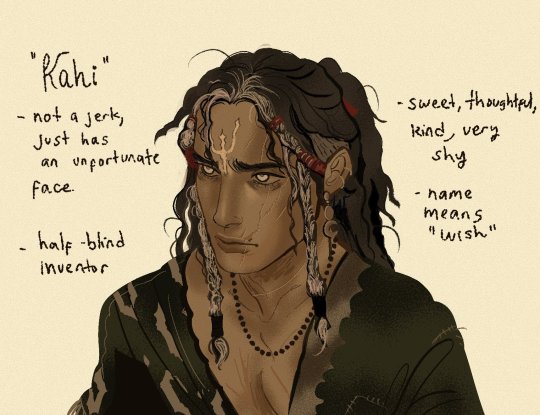
He's from Kalantiaw, but his mom is diaspora, and I thought her to be half "Japanese" (coded) - still trying to figure out how japanese ethnicities come to play.
She was a sailor turned pirate. She didn't know the language spoken in Kalantiaw (more akin to Khmer), and she spoke a different language (more austronesian), and she named him Kahilingan, which means "wish". But in Kalantiaw, where she settled, his name means "curse" or "bad omen" 💀 it doesn't help that her life ended with the beginning of his. So.

Kahi spends much of his life chasing the image of his mom and trying to.... live up to her- because sailing is the most esteemed occupation in their world. Only very very very very very few people have managed to work on "dragonships".
Basically, their world is physically broken (like living on an asteroid belt) and they sail to and fro each sundering / country on specialized stone ships called "dragonships" / "bakunawa"- and the ships themselves are semi-alive? They're like.. Stone ships laminated with the spirits of devas and dragons and other great beings who have all died because of (redacted).
Anyway, his mom, Maaya, was a renowned sailor- she tamed a dragonship that was imbued with an infamously wild dragon called Duksa- Dragonships are Sponsored, but those who sponsor the ships are almost never in command, and they also easily lose ownership to their hired captains- because the ships themselves are sentient, and they never obey anyone who they deem are incapable of commanding them. Only Maaya could control Duksa hehe. So she became known throughout all their world as this wild woman who loved fast boats and only accepted voyage commissions "if they are very fun". Anyways blah blah blah she fell in love w Kahi's other parent (who is nonbinary) and she got pregnet with him. And they eventually settled in Kalantiaw, in it's countryside near the subterranean capital (Kamharik).
Kahi always annoyed his other parent abt his mom because he too wanted to meet Duksa, but his parent kept warning him not to go near the ship because after Maaya died, it went even more mad with grief. Kahi more of an engineer than a captain like his mom, but his goal was simply to acquaintance with Duksa rather than actually captain her. But Duksa did not accept anyone, not even anyone who was part of Maaya's original crew.. Kahi went to an apprenticeship on shipbuilding-
he became somewhat popular for being clever with his hands, and all around Kalantiaw, everyone thought of him as reliable and very creative when it came to problem solving. So he went from normal ships to fixing dragonships.. ..
The Greatest dragonships are ones that are imbued with the spirits of actual ancient dragons and qilin, bc some are imbued with "lesser" dragons or false dragons, and some are with non-dragon albeit great spirits- like minor gods, wind spirits, phoenix,naga, etc etc..
Duksa was a true and great dragon, and Kahi knew that she was suffering from severe neglect, so all he wanted was to patch her up-
Everyone, every single one of Kahi's peers discouraged him, bc it is known that anyone who even approaches her is immediately kilIed by her; but Kahi, he is different. When he approaches Duksa, she was a shadow of herself, a ghost ship- She senses Maaya, and she even thought that Kahi was her at first- so she lets Kahi patch her big crabclaw sails, fixed her boilers and really tried to replicate how she used to look when Maaya lived.. and Duksa didn't know it wasn't her, because her eyes were covered in barnacles.. The "eyes" of a dragonship is its lodestar, and Kahi was purposefully saving it for last because he is frightened of what Duksa could do to him;;
But before that, Duksa spoke to him, joked like "ah beauty, what happened to you?! Your voice sounds like you swallowed a frog.. are you ill? Why did you abandon me?" Fhjsjs
"Why are your hands so gentle now? I want you to be rough!! Stop this at once! I am not old!"
But when Kahi started scraping finally at the lodestar, and he opened Duksa's eyes to the world once more, she cried in great anger because who tf was this intruder! And why did he carry Maaya's spirit with him !!!
Her entire deck creaked so hard the floorboards broke again, and she swayed her whole body so Kahi nearly fell from the lodestar;; he tried to reason with her, and it sort of mirrors how his mom tamed Duksa. She barrelled in head on and confidently, but Kahi was meek and gentle.
Eitherway.. an angry dragonship is like highly radioactive, its like being in a storm in a contained environment, and she started puffing steam- it's like microdosing being in fukushima; And she called Kahi a fool, he'll never measure up to Maaya, he will never be her- aaaah, but she didn't kiIl him. Maybe because she knew he was Maaya's boy. She warned him never to return, and tossed him into the open shallows. So, he was absolutely brokenhearted. He was 19.
~intense lonely lovestory between him and a closeted trans guy raised by mean transphobic priestesses in a cult the antithesis of a loving and wise lesbian death goddess occurs.~

There she is.. her name is Viharana Magayarin
Names-
Maaya's name is spelled a certain way in kanji, I want it to mean "True"
Duksa's name is Tagalog, it means "grief"
Kahilingan's name is tagalog- and it means "wish". Inspired from.. in tagalog, "curse" is a contronym of sorts- "curse" and "promise" is the same word ("sumpa")
Kahi's trans boyfriend's name is Tala, and it means "star" 😌
2K notes
·
View notes
Text
PSA: Mana doesn't exist in Dungeon Meshi
Some translations of Dungeon Meshi (specifically the English anime and Yen Press manga) have used the word mana to describe magic, when the original Japanese simply said magic (mahou, 魔法) or magical power (maryoku, 魔力).
Ryoko Kui does not appear to use the word mana (マナ) at any point in the manga, the published extra materials, or her blog, so calling magic “mana” is an addition made only in some translations.
For example, the French translation does not use "mana." If you know of other translations that do or don't use mana, let me know!
The use of the word mana in English comes from Maori and its earlier Proto-Oceanic ancestor language.
It describes a form of supernatural power tied to social status, respect and strength. Mana is a religious concept for many Austronesian cultures, and is not really "magic" in the way pop culture has defined it.
As best as I can understand it from an outsider's perspective, mana is more like attributing a supernatural quality to a person's charisma, or the awe one feels when faced with a natural wonder like a mountain or the ocean, or the intimidation one feels when facing a powerful group.
The use of the word mana as a generic term to refer to magical power has been criticized as being cultural appropriation of a real religious term, still used by living people, to describe fictional magic.
In addition to this, using an Austronesian word at random in Dungeon Meshi for one of the most important and fundamental forces of the universe (magic) is inorganic to the world that Kui has constructed, which is rooted primarily in Greco-Roman, Hindu/Buddhist Indian, Middle Eastern, and Germanic cultures.
Using mana to refer to magic would suggest that the Ancient culture from before the cataclysm was Austronesian, but the rest of the manga does not support such an idea at all.
There are references to Austronesian and Oceanic cultures in Dungeon Meshi, but they are mostly tied to the orcs, who don't appear to use magic, and whose culture clearly doesn't, and has never had, the social power to define what word the rest of the world uses to refer to "magical power."
How did a Maori word get so popular in English?
The concept of mana was introduced in Europe by missionary Robert Henry Codrington in 1891 after he wrote a book about his time in Polynesia. The concept was then popularized further in America in the 1950s by Mircea Eliade, an extremely influential religious history scholar at the University of Chicago.
Mana was first introduced as a magical fuel used to cast spells in the 1969 short story, "Not Long Before the End", by Larry Niven. Around this time it also became popular with new-age religious groups.
It has since become a common staple in fantasy fiction and games.
So why translate it as mana?
The choice to translate "magic" and "magical power" as mana was probably made to try and make Dungeon Meshi sound more like a video game/RPG, since so many Japanese fantasy manga feature video game or RPG mechanics, and translators working on Dungeon Meshi would have no reason to assume it would be any different, especially at the very start of the manga.
However, Dungeon Meshi is much closer to High/Epic Fantasy, like Lord of the Rings, and throwing random gaming terminology into the translation when it wasn't in the original text ("mana", "newbs" and "inventory" instead of "magical power", "newcomers" and "supplies") feels out of place.
I think adding the term mana is a disservice to the hard work that Kui has done with her careful attention to linguistic detail and culture.
In the process of working on my Dungeon Meshi research paper on real world cultural references, I have studied over 100 names and words used by Kui, and I have found that she is remarkably thoughtful and consistent in what real world cultures and languages she pulls from, and what fictional cultures she pairs them with.
Obviously I don't blame the translators for not knowing this, they had to make translation decisions before the entire manga was complete, and most likely they were doing work for hire, with no idea what Dungeon Meshi was about.
They had no way of knowing Dungeon Meshi wasn't a video game fantasy comic, and were just trying to rush through their work as fast as possible in order to get paid, and move onto their next project.
Once it became apparent that Dungeon Meshi was High Fantasy and not a world that functions like a video game, they'd already used the word mana, so there was no going back.
In an ideal world, if the translators had known the type of story Dungeon Meshi would become from the beginning, if they really wanted a single word to translate "magical energy" into, they could have picked a word that belongs to one of the language families I mentioned before, rather than using mana just because "everybody uses mana, so readers will know what it means."
What should I call magic power then?
If reading all of this has made you want to stop calling it mana, hooray! Thanks for listening to me rant. You could just call it magical power, if you wanted. Nothing wrong with that!
But if you want something a little less clunky, here's an incomplete list of possibilities in some of the languages most commonly referenced in Dungeon Meshi. Please note I have not done due diligence on every one of these, I believe none of them are exclusively religious terms still in use, but just words that could mean magic (both fictional and real) in various languages. If I'm wrong about any of them, let me know.
INDIAN: Maya, prana.
MIDDLE EASTERN: Sihr, kiisum/kesem.
GRECO-ROMAN: Ergon (as a euphemism), goteia, physis, numen/numina, mageia.
GERMANIC: Seidr, galdr.
(This post is an excerpt from my Dungeon Meshi essay with additional elaborations.)
287 notes
·
View notes
Text



Pre-Austronesian origins of seafaring in Insular Southeast Asia (2013) by Waruno Mahdi
13 notes
·
View notes
Text
Some neat facts about Taiwan I wish more people knew
First of all and most importantly, Taiwan is NOT a part of China! It never has been! It has its own government, currency, passports, etc. The only reason Taiwan doesn't officially "declare independence" is that China would probably blow it up if that happened
Taiwan has been occupied by Spain, the Netherlands, and most recently, Japan. After World War II, Taiwan was under martial law for a long time and some terrible things happened, but now Taiwan is the 14th freest country in the world, and the freest in Asia!
Taiwan was the first country in Asia to legalize gay marriage, and hosts the largest Pride celebration in Asia every October!
Bubble milk tea was invented in Taiwan!
Taiwan has A LOT of scooters and A LOT of convenience stores! It's not uncommon to see two 7-Elevens right across the street from each other. At a 7-Eleven in Taiwan, you can pick up and send packages, pay bills, top up your cell phone, buy a coffee, do laundry, buy concert tickets, print documents, and grocery shop!
ALL Austronesian peoples originally came from Taiwan. There are still over 16 distinct Indigenous tribes today (2.3% of the population), all with their own traditions.
The garbage and recycling trucks in Taiwan play music so you know they're coming. There are mostly two specific songs, one of them being Fur Elise. A lot of Americans who come to visit think it's ice cream trucks they are hearing, but nope, it's the garbage.
Most stray dogs, especially in the rural mountains, are partially Formosan Mountain Dog, an incredibly rare and beautiful species, and one of the most ancient species in the world!
Almost all of the chips making your iPhones, laptops, or cars function, were made in Taiwan! This makes the semiconductor industry a HUGE deal in Taiwan, and makes Taiwan a HUGE deal around the world
Taiwan is the most mountainous island in the world! 2/3 of Taiwan are covered in mountains, and there are 268 mountains that are taller than 3000 meters!
Taiwan has four official languages- Mandarin, "Taiwanese" (Minnan), Hakka, and the "aboriginal"/Indigenous languages. The most widely spoken language (in the North, at least) is Mandarin, by far. Some old people can still speak Japanese.
It's not 2023 in Taiwan; it's 112 (You'll see 2023 used more and more often though, but like my National Health Insurance has my birth year as 83)
534 notes
·
View notes
Text
untuk hari bahasa ini, saya cubalah mengajarkan semua tentang sikit budaya melayu dan berkongsi kosa kata juga (ENG TRANSLATION)
(for this language day, I will try to teach a little about Malay culture and share vocabulary as well)
i made the original post detailing some fun stuff abt my culture of being malay (specifically from perspective living as a Malay from Singapore), i want to do an english translation so its more accessible to those who don't speak malay. This isnt an exact translation (plus im adding mroe additonal info) so keep that inmind
FIRST, what is the Malay language? This is an Austronesian language, also the national language in Brunei, Malaysia and Singapore. Malay is usually written in Latin script, also known as Rumi. There is also Jawi script based on Arabic writing. If you want to know (most) letters in Jawi, this is a video stuck in my head from Andalus (I'm bad at writing in Jawi and Arabic too, even though I study, I don't know much;;;)
Malay culture is deeply connected with Muslim culture, that's why a lot of malay festivities and celebrations revolve around the islamic calender. one such celebration is Hari Raya. there are two ceremonies; Aidilfitri and Haji, I will talk about Hari Raya Aidilfitri only because it is close this year and most well known (for context, its litterally in april this year).
The previous month is Ramadan where we fast/puasa. We do not eat from Subuh (around sunrise) to Maghrib (around sunset) (these are two of the names of the prayer times, in Islam we are supposed to pray around 5 times a day during different intervals. it goes Subuh, Zohor, Asar, Maghrib, Isyak). Before dawn, want to eat Sahur and then pray. At Maghrib, want to eat to break the fast/ berbuka puasa (usually say "buka" for short). Also in this month before Aidifilti, the family will prepare by cleaning the house for visitors, buy new baju kurung, get kuih, etc etc.
aaaa there are a lot of kuih, here's anything I can name (many are from Singapore); kuih lapis, kuih salat? ondeh ondeh, kuih bahulu, kuih dadar, BISKUT CORNFLAKES OMG does that count?. there are many more lol.

ALSO! In Singapore, during Ramadan, there is a huge Night Market in Geylang. Not only in Geylang there is a night market but this is very popular. There are MANY stalls selling food. Everyone who buys from geylang night market knows Ramly Burger, deep-fried Oreos, vadai, KEBAB, DENGDENG. (I like to buy rolled ice cream and chicken kebab mmmm)
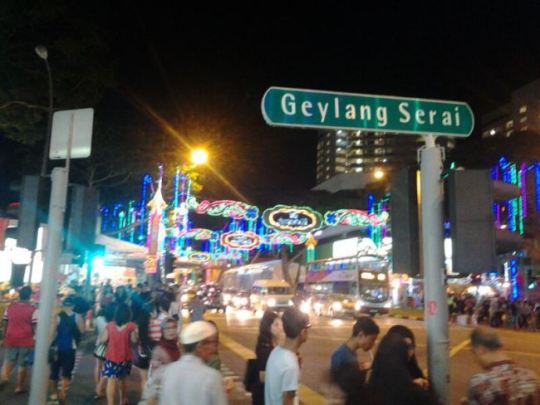
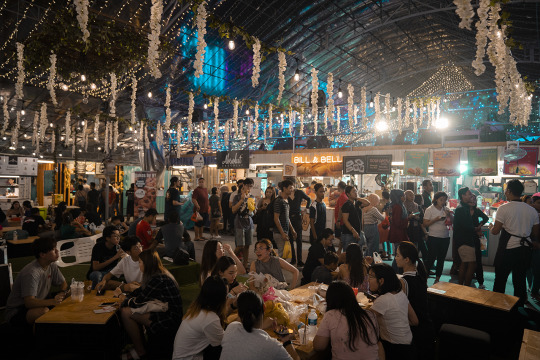
In Geylang too, they will buy traditional clothes to visit family. Baju kurung (ehh for traditional clothes, women wear baju kurung, men wear baju melayu but the names are the same anyway) is the normal clothing. Often, one household will choose to coordinate colors together (but it's not mandatory, lmao my family doesn't care)
For men, they wear songkok (that flat black hat) and samping (the long scarf wrapping around the waist)
For women, wear a sarong (skirt) with a long top. If desired, will also wear a tudung (type of hijab) (i should also clarify for muslim women its their choice whether they want to habitually wear hijab. its not just specific to just baju kurung. for example i have lots of aunties that dont wear hijab at all meanwhile i have a lot of aunts who do)
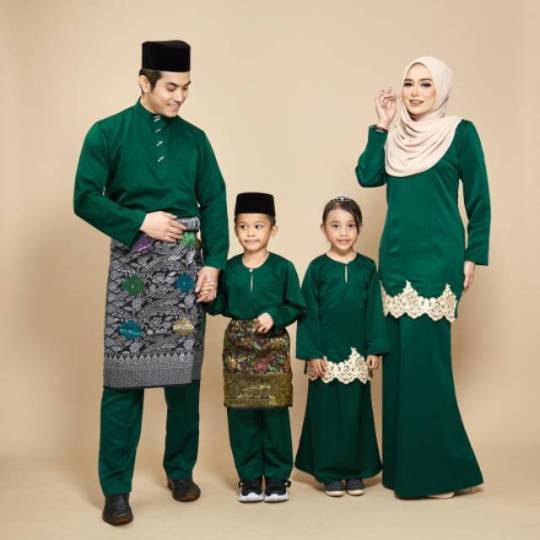
Baju kurung is also worn at other festivities, such as weddings

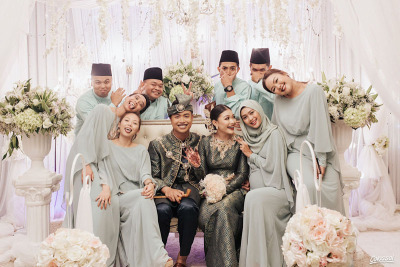
(my whole childhood I attended so many weddings, this is another topic lmaooooo)
On Hari Raya Aidifilti but before going to raya (this is what we generally call going out to see family), close family in will ask for forgiveness. (it's important the forgiveness is not one-sided, the adults will also ask forgiveness from the younger family members too). Usually this is when people start crying. After that, we go RAYA!!! When in someone else's house, if you are not working now, you can get duit raya! (because I grew up in singapore surrounded by chinese influence, I also call this "angpao" too)
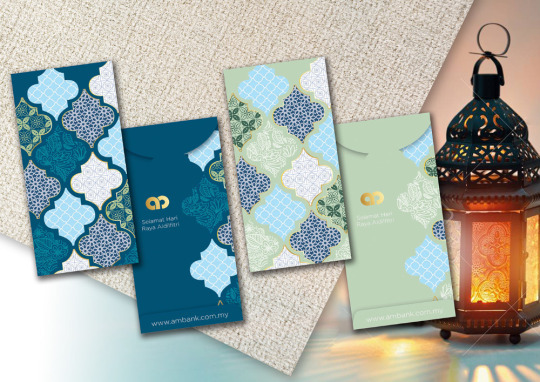
OHHHH THERE IS A LOT OF FOOD;;;; My grandmother would cook a lot during Ramadan and Hari Raya. Rendang, lontong, KETUPAT OHHH KETUPAT, CHICKEN CURRY (my mother every aidifitri cooks green chicken curry, FOR HARI RAYA AIDIFITRI ONLY, ohhhhh that's my favorite part, ASBFKASB I'M HUNGRY.)
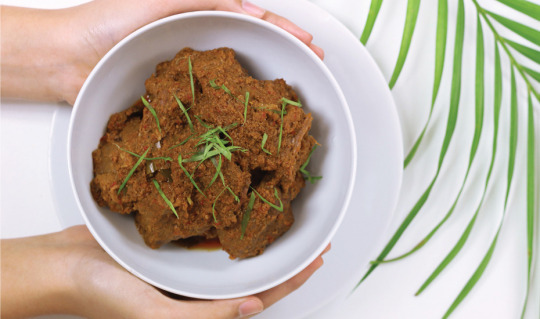
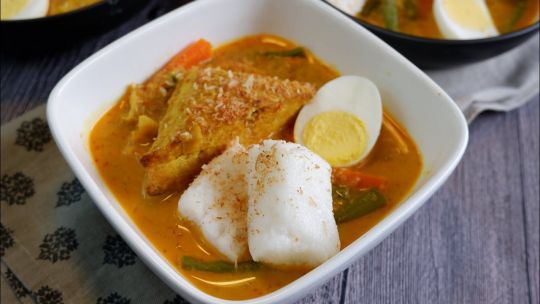
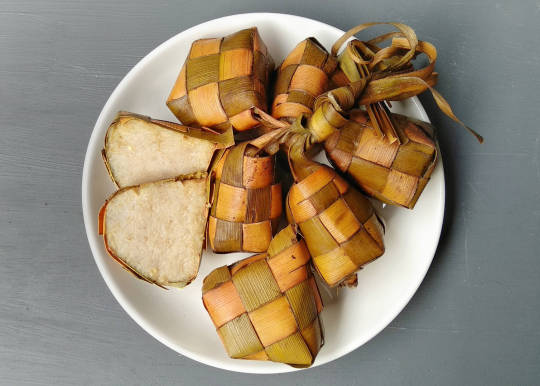
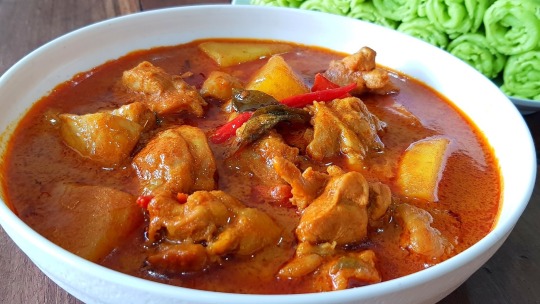
(theres also like way more cuisine than this, iu havent even mentioned nasi goreng and nasi lemak and briyani and FUCKIGN BEGEDIL;;;;)
ketupat is kind of icon to represent Aidifilti holiday, for example:
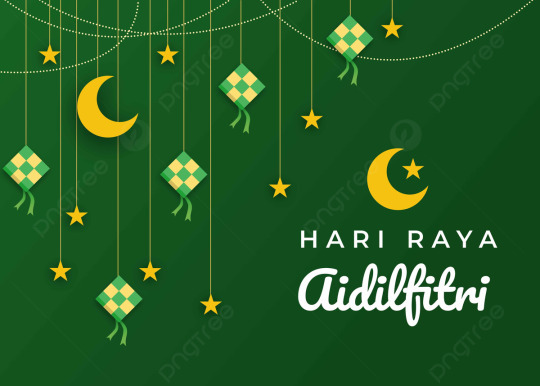
other icons of hari raya include: bunga api, neon string lights, bamboo torches, etc.
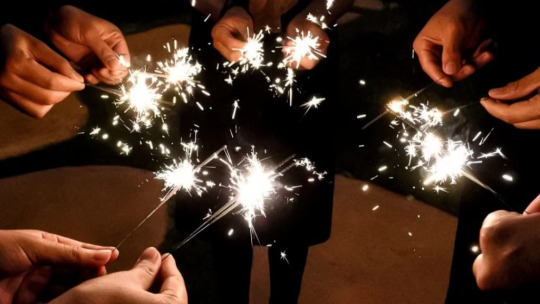
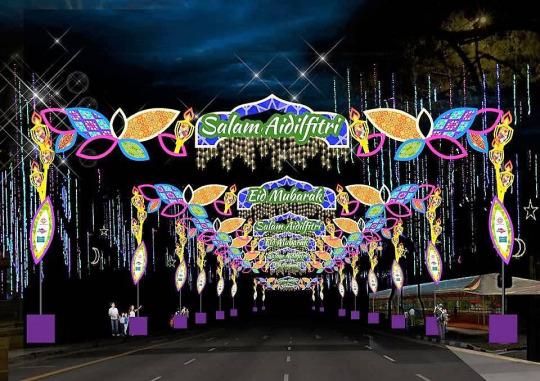

I love Hari Raya even thoug my feet hurt ALOT after visiting LOTS OF FAMILY AND FRIENDS OH MY GOD:;; it's okay if you take your shoes off in the house somehow your FEET WILL HURT at the end of the day;;;;;;
uhhhh others about malay culture? we have art! A martial art is silat melayu! I don't know much about this but it's great

there is performance art: one example is dikir barat
youtube
juga ada permainan, ada yang terkenal ialah wau (kite)

and congkak (like that one club penguin game, mancala, im not kidding)
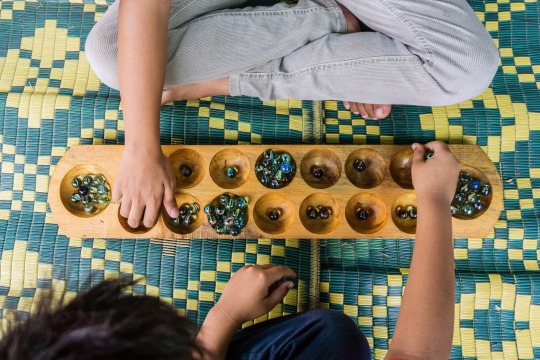
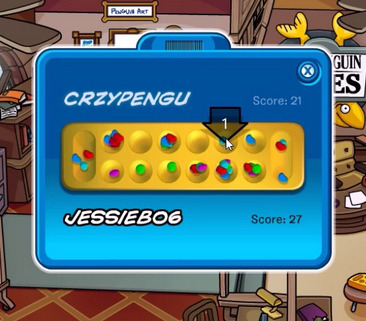
there are many malay cultures that are also from indonesian culture because of its influence. (Mainly malay culture was influenced by its neighboring cultures such as from Thailand, Sumatra, Java. Malay culture were from Hinduism before then converting to Islam) That's why we have wayang kulit (natively from Java)
(a lot of indonesian culture and malay cultures share similar things because of kinda their similar roots and their spread of their own culture, hence why we also have similar dishes, traditonal clothes, even our language is kinda 70% the same)

Do you know; Singapore was discovered by Sang Nila Utama and was originally Malay kingdom (at that time the island was called Temasek before it was owned by the British) (the original indigenous of Singapore are called Orang Laut, litterally translated to "people of the sea"). That is why in Singapore, the language and the national anthem (Majulah Singapura) is in Malay. Singapore is not only for Chinese people, we Malays and Indians are also here;;;
(and im not at all from malaysia god please none of my relatives are. Malaysian is referring to the country, Malay is the language and the ethnic group)
There's a whole lot more I haven't even touched on, like lmao there's a whole thing about weddings and a whole baby shower thing.
theres also a lot of singaporean stuff i want to share i haven't even mentioned singlish but thats a post for another time
55 notes
·
View notes
Text
Please note that the families listed here were chosen purely by number of speakers, as those would be the most likely to be spoken. There are still MANY more language families not listed
Some of these have over a thousand languages so I cant list all of them, but I'll list a few languages from each family and the generam geography of it under the cut
Austronesian
Languages spoken mostly in Southeast Asian archipeligos including Indonesian, Malay, Javanese (NOT Japanese), and Tagalog, among others
Sino-Tibetian
Languages spoken mostly arround East and Southeast Asia along with some parts of Central Asia including Chinese (all dialects), Burmese, Tibetic languages, and Nepali, among others
Indo-European
Languages spoken mostly around Europe and South-Southwest Asia including English, all romance languages, Greek, Albanian, German, Hindi, Bengali, and Sanskrit, among others
Afro-Asiatic
Languages spoken mostly around Northern ans Northeaster Africa, and West Asia including Egyptian, Hebrew, Arabic, Amharic, and Hausa, among others
Fun fact! When counted as a single language, Arabic alone is spoken by over half of the native speakers of Afro-Asiatic languages
Atlantic-Congo
Languages spanning most of Africa exclusing Northern parts including Fula, Wolof, Swahilli, Kirundi, Luhya, Makua, Xhosa, and Shona languages, among others
Fun fact! This family has the most languages of any language family at 1,453 total!
Dravidian
Languages spoken mostly in souther India, along with surrounding countries, including Telugu, Tamil, Kannada, Malayalam, and Brahui, among others
Turkic
Languages spoken in many countries throughout (mostly central/centeal western) Asia and Eastern Europe including Turkish, Azerbaijani, Uzbek, Uyghur, and Kazakh, among others
Fun fact! While we mostly think of Turkic languahes being from Eastern Europe and Central Asia, Proto-Turkic actually originates from East Asia around China and Mongolia! It's seldom spoken there anymore
Japonic
Languages spoken mostly in Japan (Note: NOT including the Ainu languages) including Japanese, Ryukyuan, and Hachijō, among others
Fun fact! Japanese was considered an isolate language (a language with no other languages in its family) until the Ryukyuan languages joined it in the Japonic family.
It also has the lowest number of languages of the ones listed, with 13 languages.
Should Koreanic have made it onto the list (It was JUST bekow Kra-Dai for # of speakers), that would be the lowest with only 2 languages!
Austroasiatic
Languages spoken mostly around South through East Asia Including Vietnamese, Khmer, Tagalog, among others
Fun fact! Two-thirds of people who speak an Austroasiatic language speak Vietnamese
Kra-Dai
Languages spoken mostly in Southeast Asia and Southern China including Thai, Lao, Bê, among others
#I spent an unreasonable amount of time on this#I KNOWWWW this poll is gonna be dominayed bt indo-european but
49 notes
·
View notes